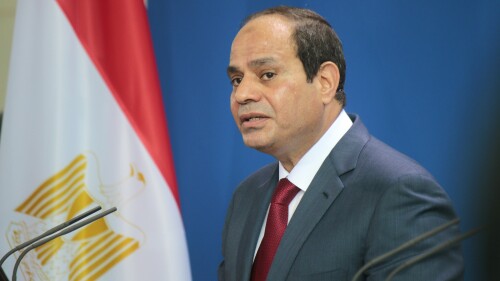Sa’ed Atshan, a professor of Peace and Conflict Studies at Swarthmore College, is an alum of the Quaker school in Ramallah and a staunch BDS advocate. |
It is hardly a surprise that Sa’ed Atshan would be given tenure at Swarthmore College. What is noteworthy is how this came about, something well beyond the normal tenure process in academe. It points to the special place Boycott, Divestment, and Sanctions (BDS) supporters have in academia.
To start, Atshan is a well-known BDS activist, and the college itself has endorsed BDS. In many ways, Atshan is a poster child for Quaker education—he’s an alum of the Quaker school in Ramallah who now teaches for the same Quaker school he attended as an undergraduate. He represents the Quaker echo chamber regarding the Israeli-Palestinian conflict that ensures that only the Palestinian narrative will be voiced.
Atshan has also been active with Students for Justice in Palestine, whose parent organization, American Muslims for Palestine, was recently shown to be connected to the same American Muslim Brotherhood supporters who funded Hamas through the Holy Land Foundation, and which has trained its activists in “Countering Normalization of Israeli Oppression on Campus.”
The Ramallah Friends Middle School building in Ramallah. |
The Ramallah Friends School, where Atshan was educated, is one of the oldest Quaker institutions in the Middle East. The school acts as a feeder to the Quaker colleges in Pennsylvania. Another proud alum of the school is Joyce Ajlouny, the Secretary General of the American Friends Service Committee (AFSC). Ajlouny is a native of Ramallah and formerly the head of the Quaker school.
The Ramallah school has also been exporting its pedagogy through programs like “Go Palestine,” which is focused on Palestinian culture. Yet, in addition, “Go Palestine” participants receive a steady dose of anti-Israel rhetoric through films and lectures. These include"Occupation 101" and “Jerusalem: The East Side Story,” films which depict Israel as a racist, savage oppressor. A panel on “Youth Activism and Engagement in Palestine” featured representatives of “the Love Under Apartheid Campaign [and] the BDS movement.”
Spreading their faith through direct evangelizing was not as central to Quakers as it was to other Protestant denominations, but their theology of individual action led them to create institutions that would, in effect, speak for themselves. The accusations of proselytizing lodged against their schools in Palestine may have sensitized AFSC personnel to the problem in later years.
Quakers have gone from defending Jews in colonial times and saving them during the Holocaust to vilifying them today. |
But despite Quakers’ theological opposition to nationalism, it became unavoidable during the decades after World War I. For example, the Quaker boys’ school in Ramallah became a hotbed of Arab nationalism and opposition to Zionism, particularly under the leadership of Khalil Totah. Educated at the school and later at Columbia University, Totah became headmaster in 1927, taking the reins from A. Willard Jones as part of a deliberate policy of handing Quaker educational institutions over to local Arab Quakers. Totah was a vociferous opponent of Zionism, which he regarded as the chief attendant evil of imperialism.
Consequently, it is no surprise that Quaker schools are fertile ground for BDS and have become ground zero for pro-BDS faculty and students. The Quaker tradition of even-handedness and political neutrality has long passed; by the late 1970s, the American Friends Service Committee (AFSC) had effectively enshrined Palestinians as the “new Jews.” Support for Palestinian terror as “resistance” against Israel’s “structural violence” and against sanctions on Iran’s nuclear program is now customary.
Quaker support for BDS is long-standing and deeply rooted in the denomination’s history. Since the 1960s, we have seen the growth of “scholar warriors” who have given up the ideal of impartial scholarship for activism. Because Quakerism is about doing rather than praying, their institutions created mission-oriented avenues that are today chiefly focused on the Israeli-Palestinian conflict.
When it comes to Jews, the Quakers increasingly share the supersessionist theology of some American Protestant denominations, a theological justification for deemphasizing the Jewish connection to the Holy Land and deriding the Jews as a people forsaken by God. Zionism presented a direct challenge to supersessionist theology, and many Protestant missionary and aid groups in the Middle East opposed the movement and supported Arab nationalism. The Quakers, for the most part, stayed neutral on the subject, although Quaker institutions in Palestine itself and individual Palestinian Quakers became leading advocates of Arab nationalism and fervent anti-Zionists.
So, while Atshan’s tenure isn’t shocking, it exemplifies how the BDS movement is a religious movement acting within a religious denomination which justifies and populates North American campuses. A deeper understanding of the religious ingredients that have become essential to the BDS movement is necessary to properly defeat the fallacious narratives it propagates in the academy and beyond.
Asaf Romirowsky is a fellow at the Middle East Forum, executive director of Scholars for Peace in the Middle East, and a senior non-resident fellow at the BESA Center.










